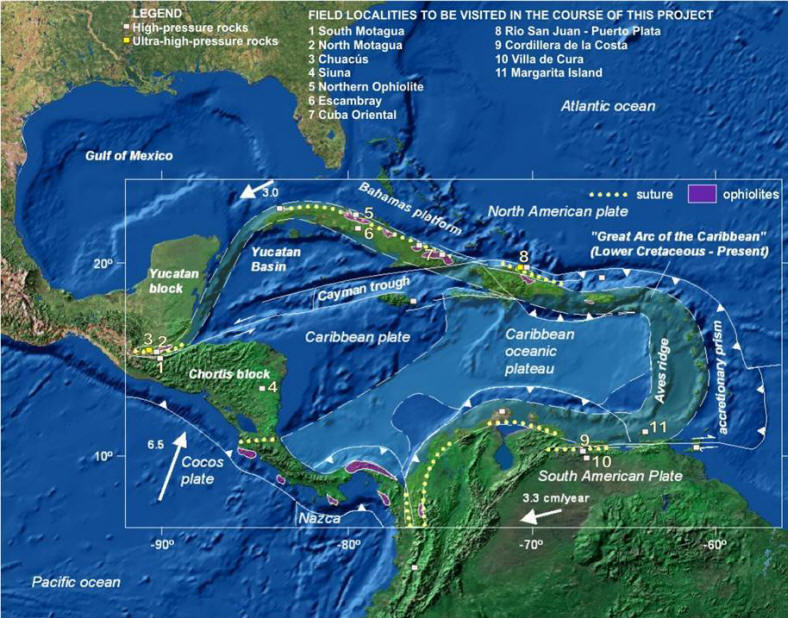
Figure 1. Plate tectonic configuration of the Caribbean region, with important geological features including ophiolitic bodies, suture zones, and occurrence of high-pressure rocks.
Background
Oceanic trenches constitute the largest physiographical construction in the surface of Planet Earth, with >55.000 km of aggregated length. They form as lithosphere is consumed, a process called subduction, and the resulting plate-scale structure is a convergent margin where intense seismic activity and volcanism take place. Subducted material recrystallizes in response to increased pressure and temperature into dense rocks such as blueschist and eclogite, which sink down into the Earth’s mantle responding to negative buoyancy forces. Rarely do tectonic conditions allow the return and exhumation of previously subducted materials. Collision of buoyant lithospheric blocks terminates subduction leaving its relics as a suture in orogenic belts. Analysis of high-pressure (HP) rocks from sutures around the world has demonstrated the non-steady thermal state of subduction zones, both in time and space, which ultimately controls the distribution of earthquakes and volcanoes.
The Caribbean plate is bounded by the active Central American and the Antillean subduction zones, which cause intense seismic activity and volcanism in the region. This region also contains a number of Mesozoic-Tertiary sutures documenting former subduction. Establishing the link between ancient and current subduction is critical for a well founded understanding of the tectonic evolution of the associated convergent plate-margins, shedding light on the geodynamics of such a populated and geologically hazardous region. Current studies on HP rocks found within these sutures have identified an unusual thermal and compositional range since ~ 120 Ma:
(a) Very cold subduction of oceanic lithosphere recorded in lawsonite-bearing eclogites south of the Motagua suture (Guatemala) and the Samaná peninsula (Dominican Republic)
(b) Cold- to hot-subduction of oceanic lithosphere (including volcanic arc material) recorded in blueschists, eclogites and garnet amphibolites in the Villa del Cura-Cordillera de la Costa-Margarita Island (Venezuela), Puerto Rico forearc, Samaná Peninsula, Blue Mountains (Jamaica), Purial complex (eastern Cuba), northern serpentinite belt (west-central Cuba), the northern Motagua suture (Guatemala), and the Río San Juan complex (Dominican Republic)
(c) Very hot subduction of oceanic lithosphere recorded in partially melted garnet-amphibolites in eastern Cuba
(d) subduction of continental material of the Chuacús (Guatemala), Guaniguanico, Isle of Pines, and Escambray massifs (Cuba)
(e) Garnet-bearing mantle peridotites that record extraordinary depth of formation at Rio San Juan (Dominican Republic).
Although many local studies have been carried out in the past few years, the precise timing of subduction-related metamorphism and thermobaric structure of subduction zones have not been established in many of the sutures. In addition the relations between oceanic and continental HP belts are poorly understood, and few studies have integrated information from this wide range of HP occurrences for a systematic comparison. As a consequence, it is unknown whether the aforementioned HP occurrences correspond to one or several subduction zones that evolved in time and space, leading to considerable speculation in plate-tectonic reconstructions for the region. We plan to organize a series of workshops and field trips throughout the Caribbean that will enable a systematic comparison of high-pressure belts and help unravel the tectonic history of the region.
Figure 1. Plate tectonic configuration of the Caribbean region, with important geological features including ophiolitic bodies, suture zones, and occurrence of high-pressure rocks.
last modified: 05.29.07 18:35 +0200